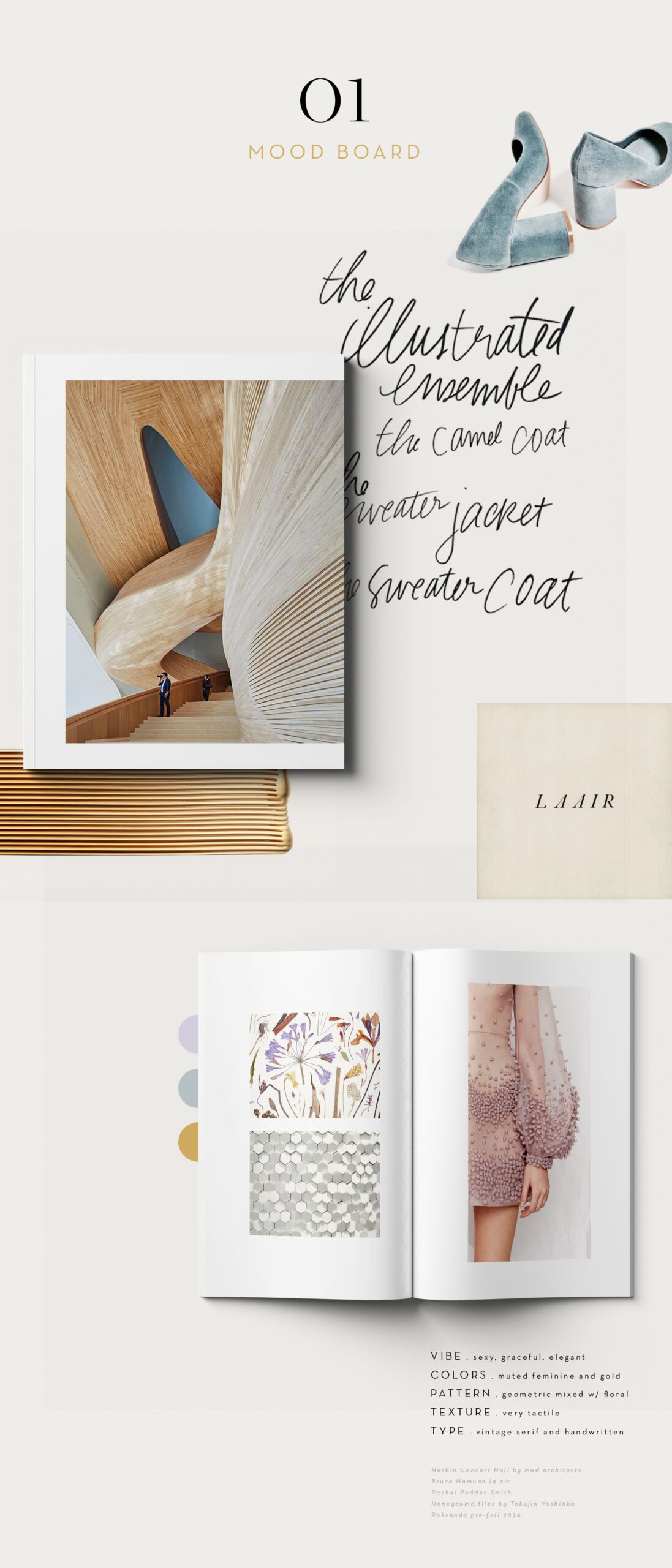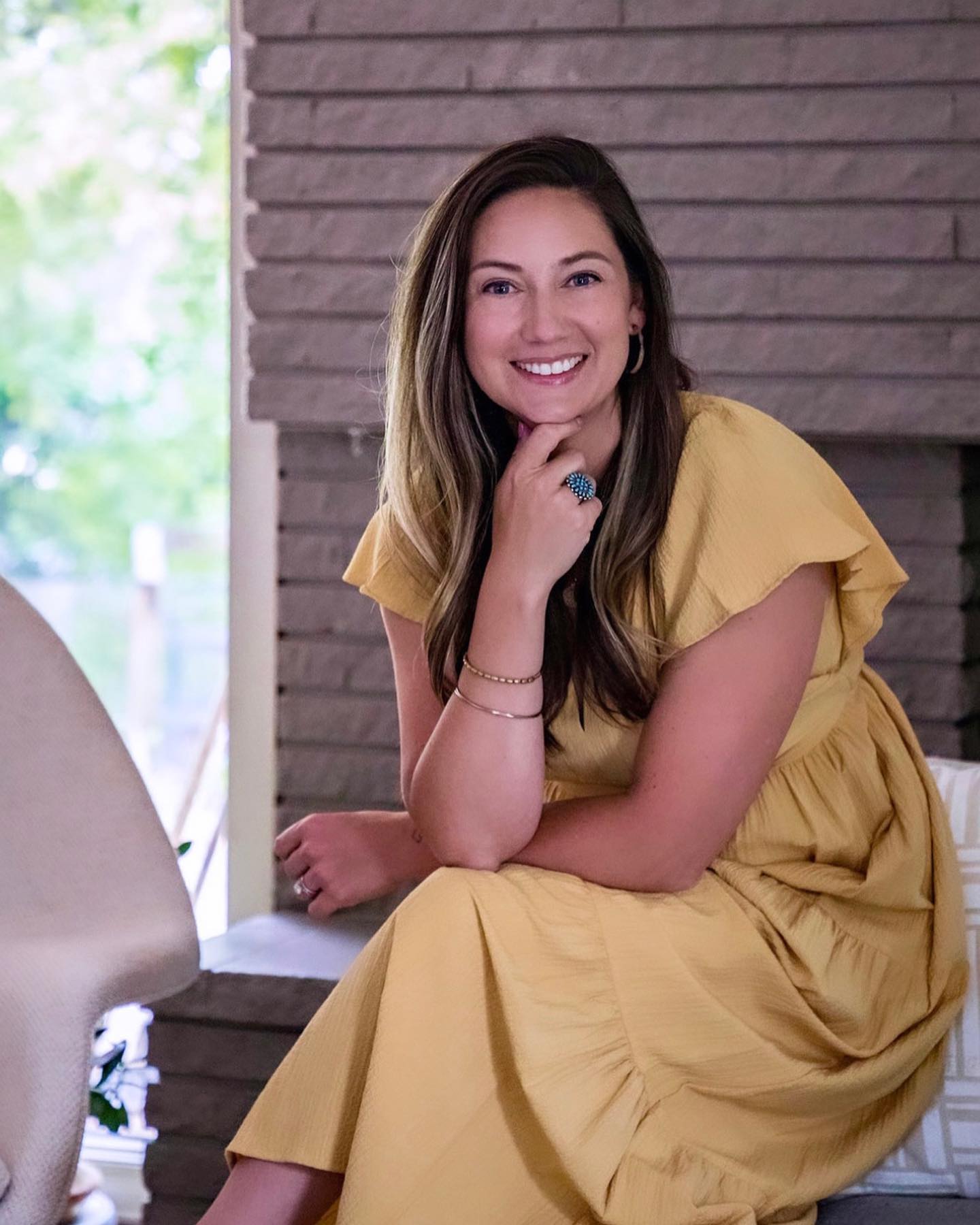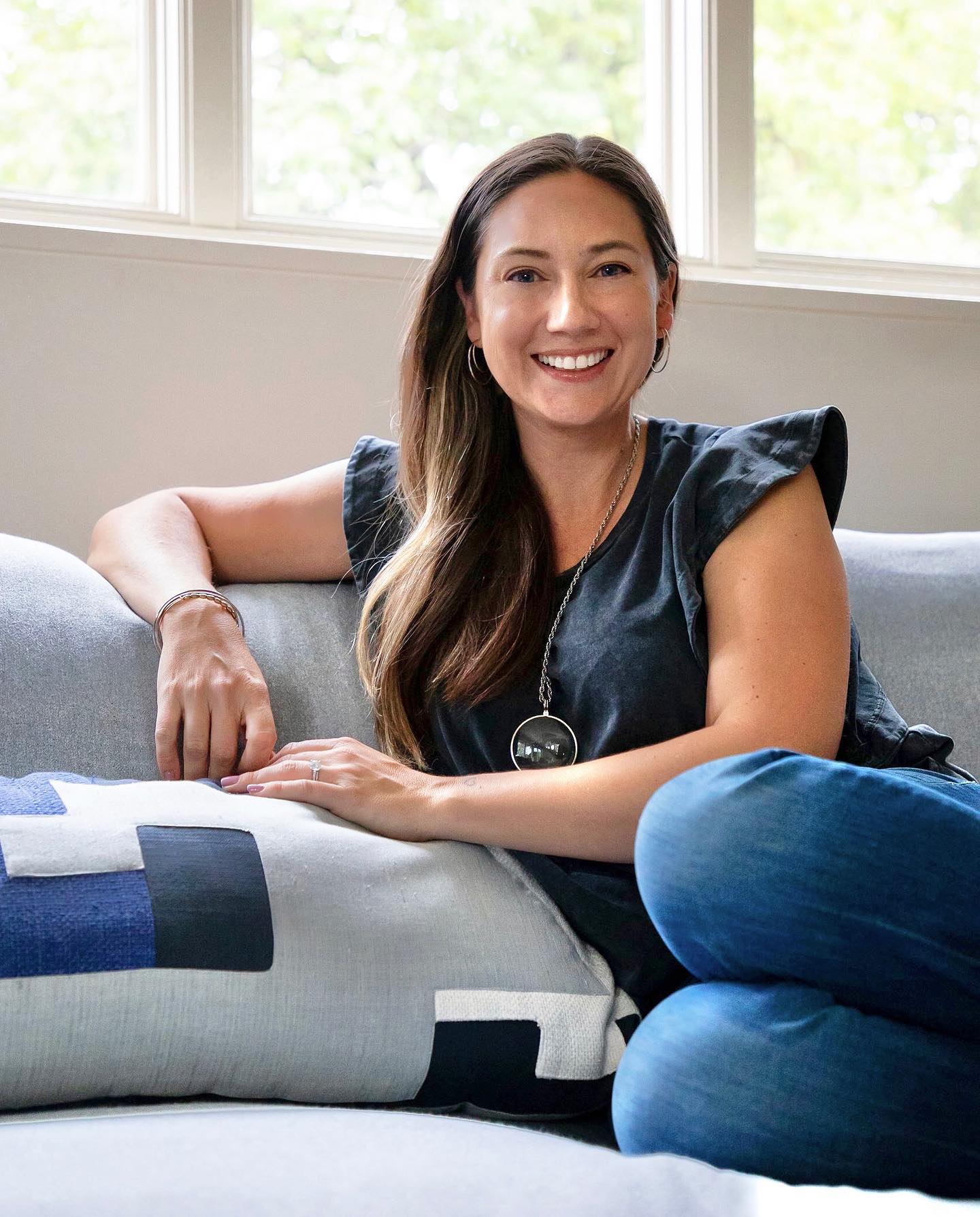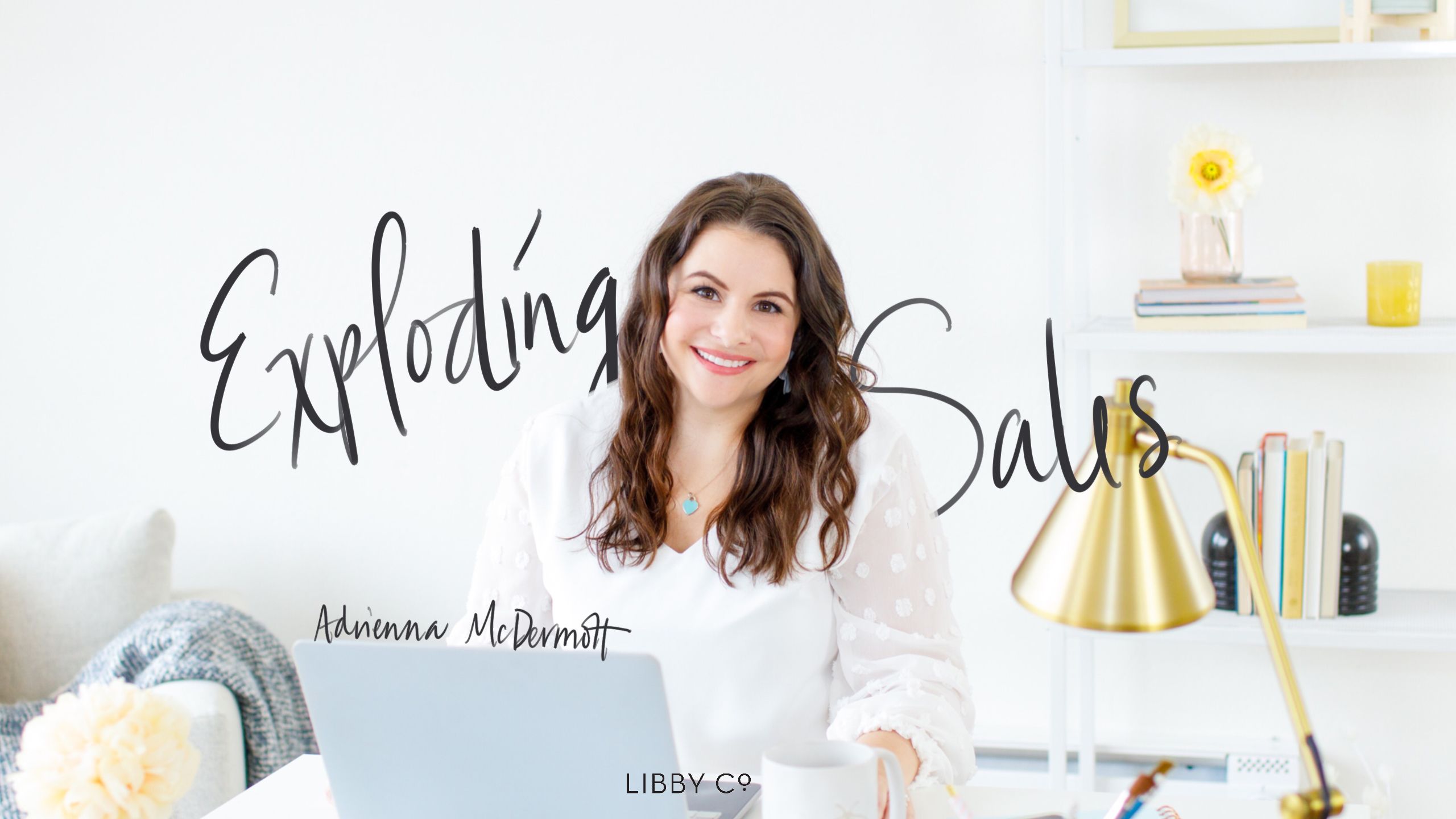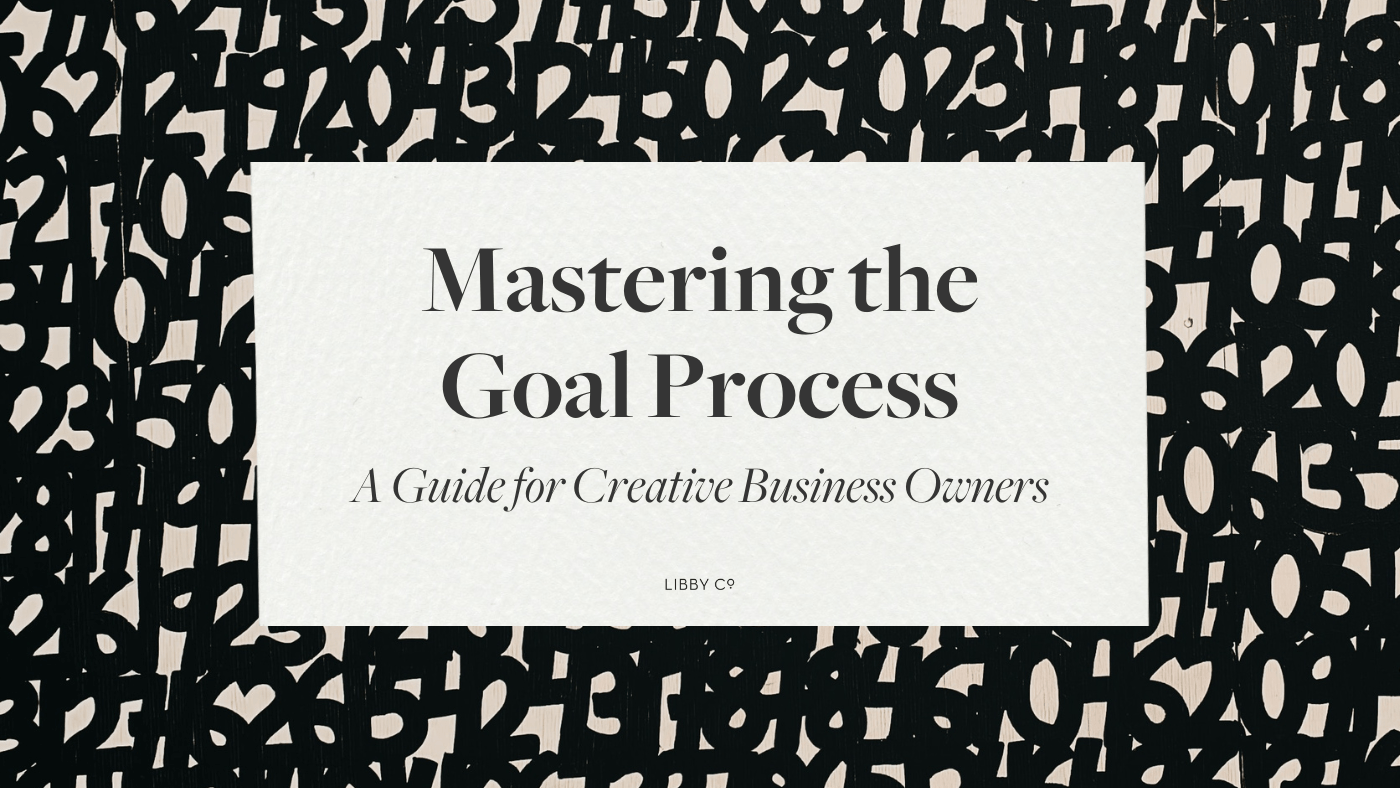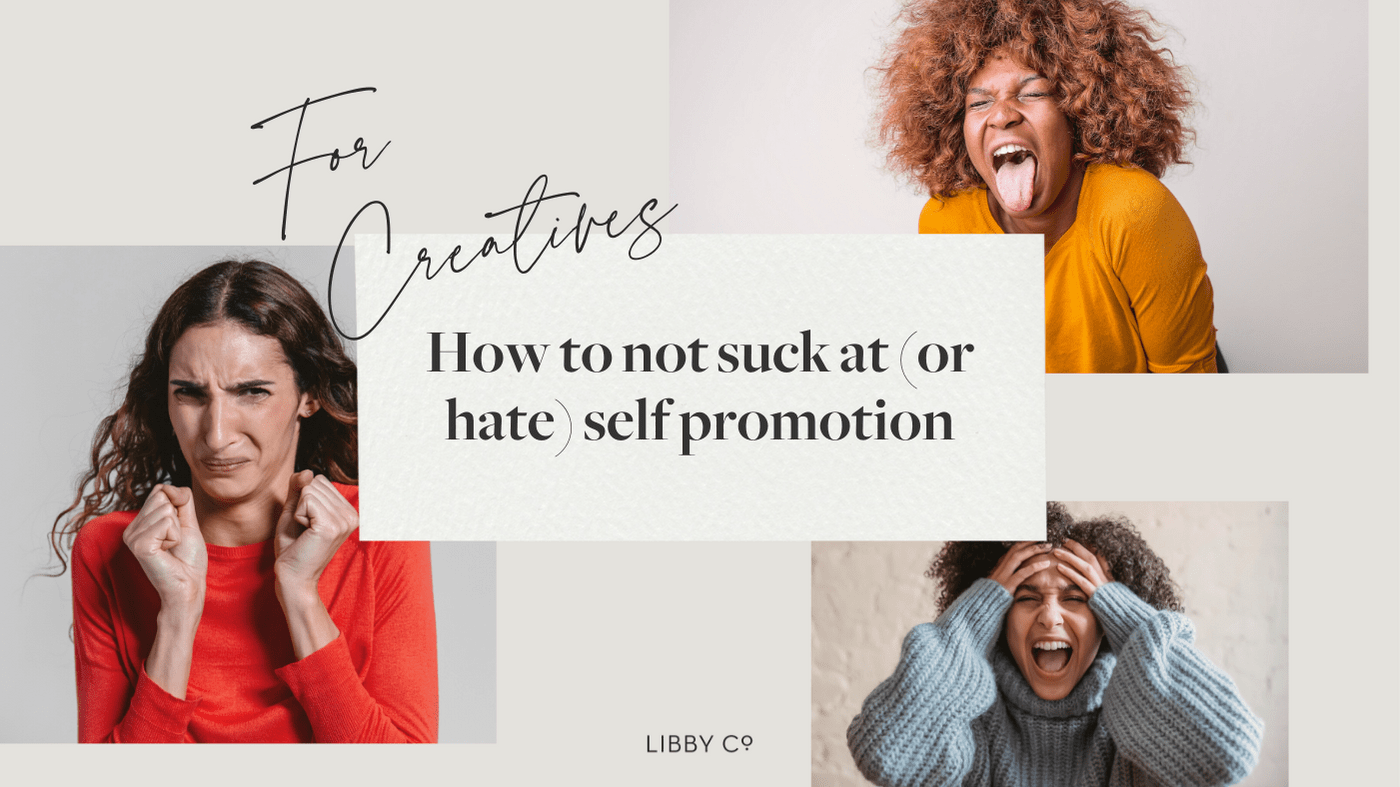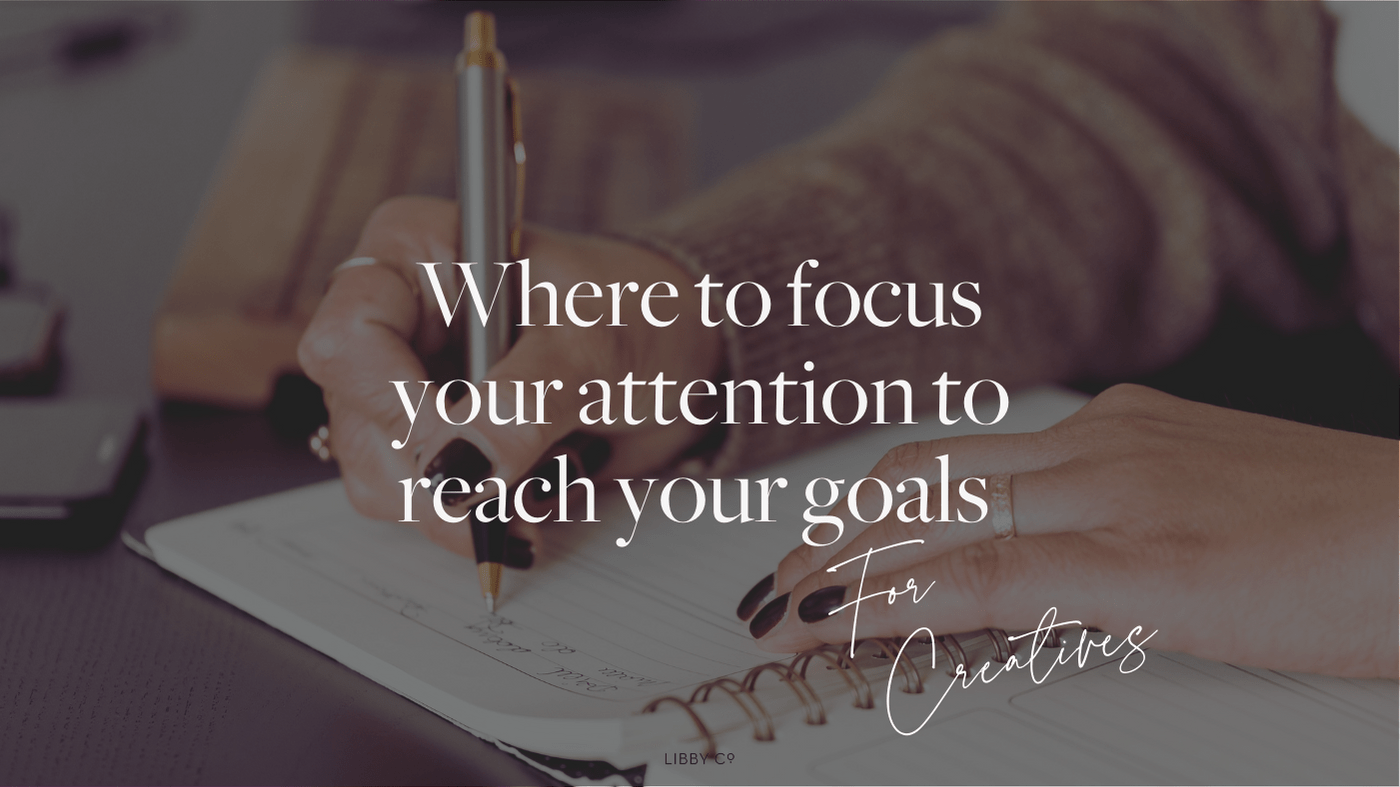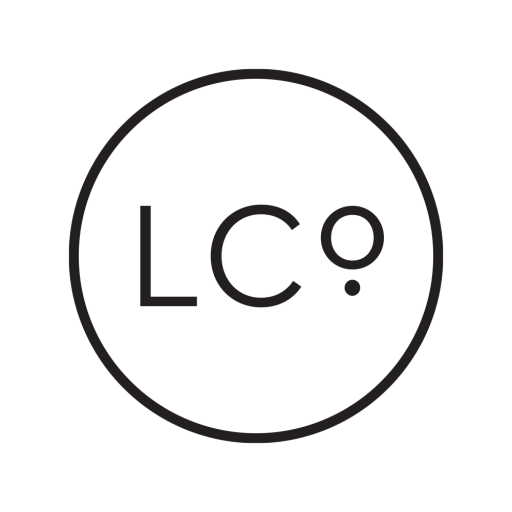Learning to create the perfect brand board is essential if you want to get crystal clear on what your brand is all about so that you can easily attract the right people and grow your audience. When done right your brand mood board will act as a roadmap to not only guide you through the process of creating all of your brand assets, but also helping you develop the right content for years to come.
Whether you’re hiring a designer to do your branding or DIYing it, it’s crucial you start with a mood board – otherwise you could be lost not knowing which way to go.
Here is the process is the 5-step process
I teach to all of my students in my Mood Board Masterclass Workshop:
STEP 1:
Uncover your Customer’s Core Desired Feelings
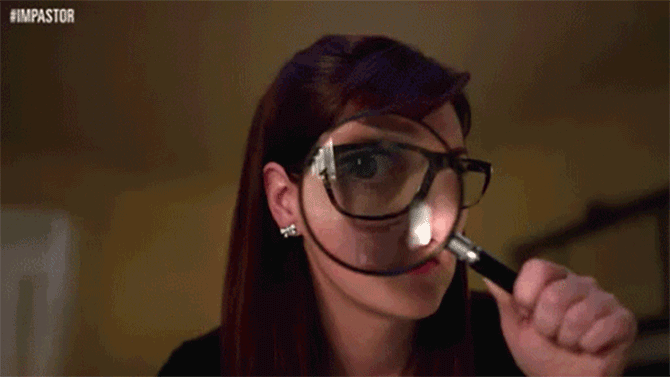
In other words, what is the core feeling your customer is striving for when he or she buys from you? Each of us makes purchases from a deep emotional desire. If you want this whole business thing to take off, it’s your job to discover what those desired feelings are.
Some examples:
- If you sell perfume, maybe your customer desires to feel beautiful.
- If you are a branding designer, maybe your clients want to feel confident launching their website.
- If you’re a business coach, maybe your client’s drive is to feel financially abundant.
- If you sell organic bedding, maybe your customer’s wants to feel comfortable.
Shoot for the top 3 core feelings. If you have no idea what your customers are feeling, then either take time to talk with them or make your best guess. You gotta start somewhere.
STEP 2:
Search for imagery that evokes those Core Desired Feelings in YOU
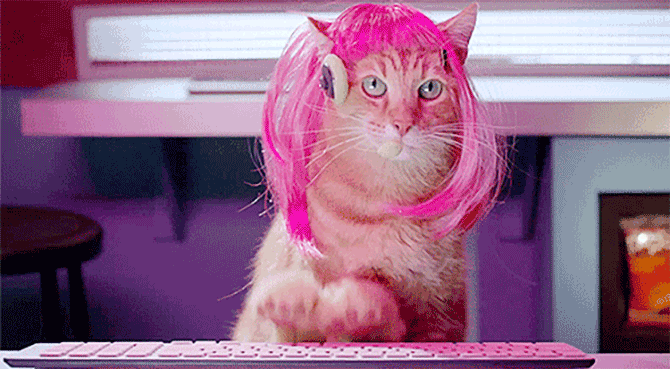
The laws of likability state that people similar to YOU will be drawn to you and “like” you with fewer hurdles than people who can’t relate to you. So it’s a safe bet that what evokes a certain feeling for you, will evoke the same feeling in someone who will likely be drawn to you. AND the goal is to start evoking those core desired feelings the minute they land on your content.
Make sense?
To get the heart of it ask yourself: What makes me feel_(core desired feeling)_? And see what comes up.
For example:
If the core desired feeling is tranquility? Ask yourself, what makes me feel tranquil? Maybe you find tranquility at the beach or in minimalist spaces. Maybe you feel most tranquil in your pjs or when a friend gives you a long quiet hug. Search for and gather images to support what comes up.
Do this for each of your core desired feelings.
Having trouble getting started? Here are some trigger to help you get going…
- What space makes me feel __(desired feeling)__?
- What color makes me feel __(desired feeling)__?
- What outfit makes me feel __(desired feeling)__?
- What season makes me feel __(desired feeling)__?
- What place makes me feel __(desired feeling)__?
- What people make me feel __(desired feeling)__?
- What activity makes me feel __(desired feeling)__?
STEP 3:
Look for common themes and choose your “look”

Chances are what you have on your board right now is a hot mess. Full of a bunch of different things that may or may not work together. Part of developing branding is about being visually appealing so that when people land on your website they’re not only attracted to you but can also start to “understand” you on a very basic level.
This step is actually three parts:
- Remove anything that doesn’t fit or feel right.
- Divide up images into themes.
- Choose which theme feels right to you.
Types of themes to look for:
The first type of theme is visual. Do you see gold coming up over and over? Or do you see plants and nature throughout? These are the easiest to spot.
However, there could be emotional or energetic themes. These are sometimes harder to spot but can be very powerful. For example, maybe you have a high energy vibe going on, like dance parties, kids laughing and people running. Even though the content might look very different the vibe is the same.
We’re almost there!
Once you’ve selected the theme that feels right you can get rid of everything that doesn’t fall into it and you’re ready for the next step.
STEP 4:
Complete the look with logo and font inspiration
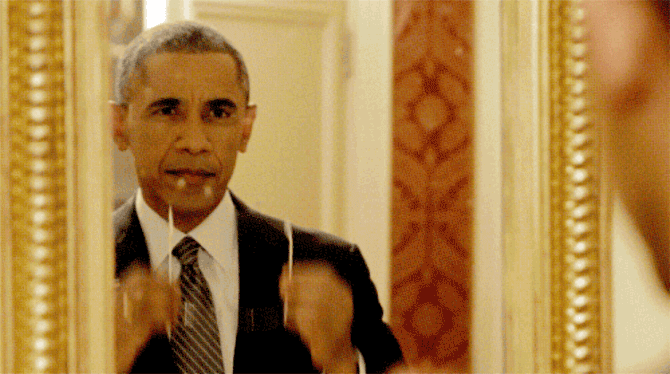
You have your theme selected and it feels great. But you’re asking how do I create a brand identity from this?
While what you have might be a great jumping off point for the vibe, imagery and colors that will make up your brand, it probably isn’t as useful when it comes to creating a logo or choosing fonts. But the good news is that once you have the foundational theme in place (which you do!) it becomes way easier to see what graphics will work best.
Keeping your core desired feelings and theme in mind, go in search of logos and fonts that work with what you have in place. This part isn’t rocket science. I like to say this process is 80% strategic and 20% magic because there aren’t hard and fast rules. The goal here is to choose logos and fonts that feel right and look good with your theme.
Add the following to your board:
- At least 1 logo
- At least 2 fonts
STEP 5:
Put it all together using a pretty template and take a bow

The point of having this crystal clear mood board is to use it as a roadmap when creating and building your brand. So it’s more important that it’s useful than pretty. However, I like to put it into a final format because it makes it feel more complete and not like it’s still a work in progress.
If your perfectionist habits have a tendency to creep in putting it into a final format will help you resist the temptation to tweak and overthink it. Moving forward is crucial if you want to get onto activities that will grow your business so don’t skip this step.
You did it!
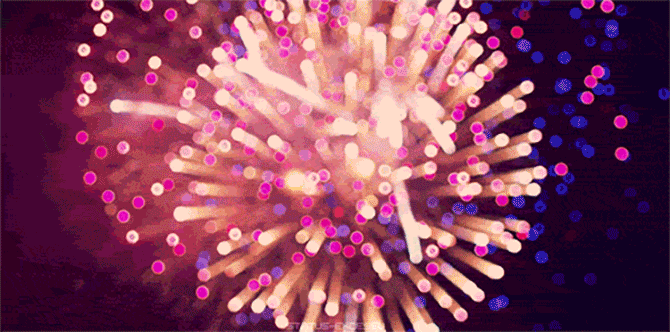
Hooray!!!
Want to see examples from my students?
In my week long live workshop we go more in depth into this process and work through everything together. Here are some examples from students:
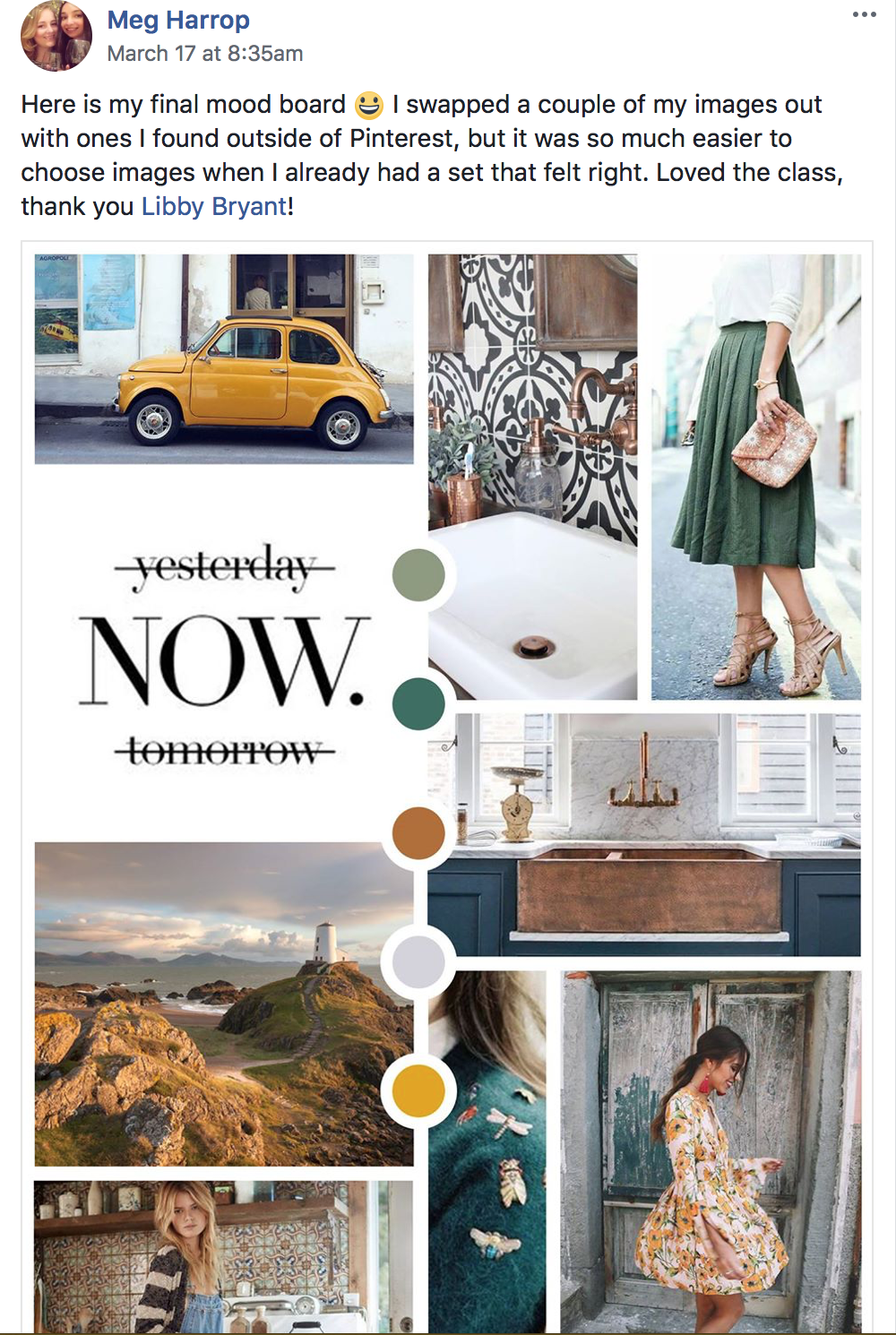
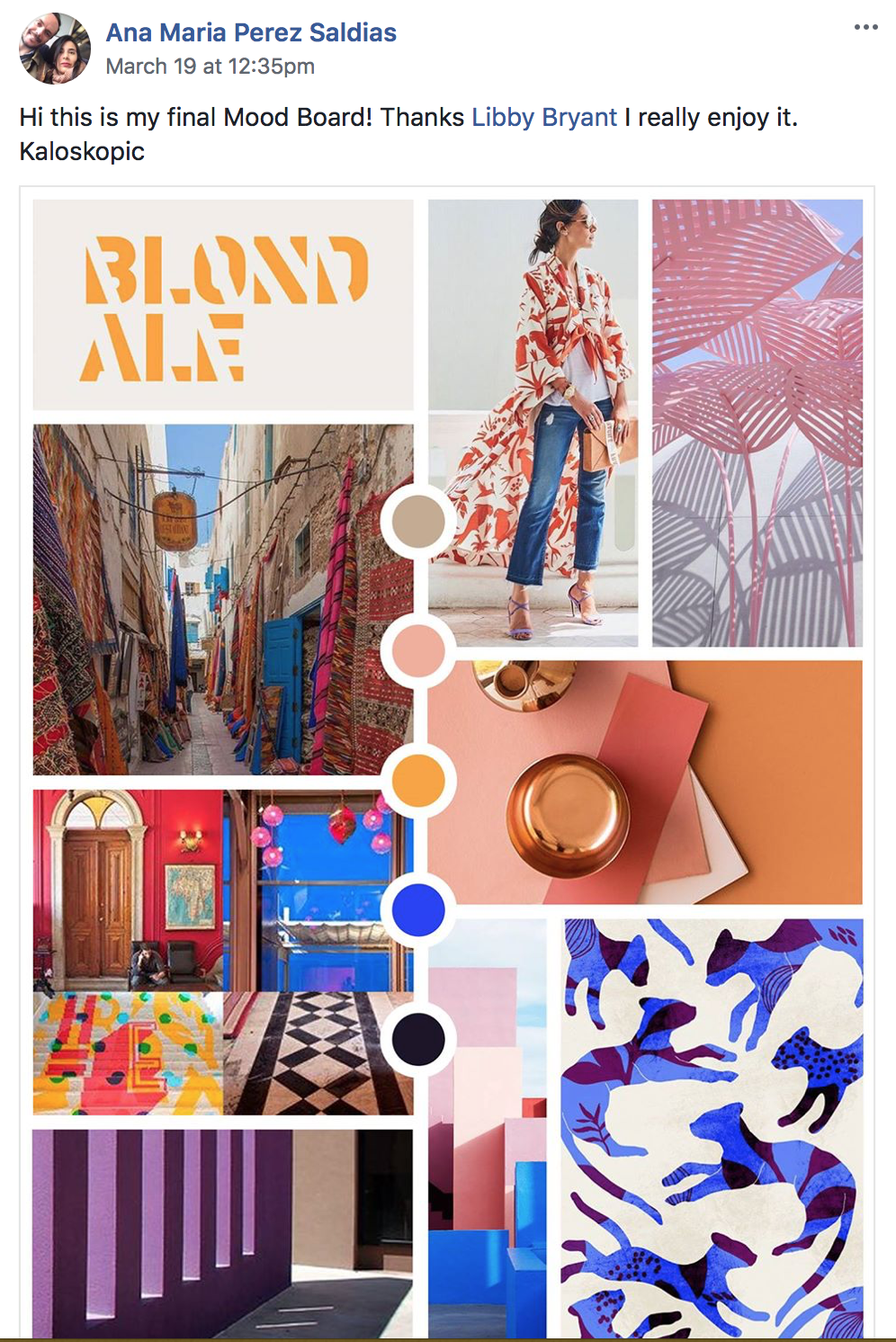
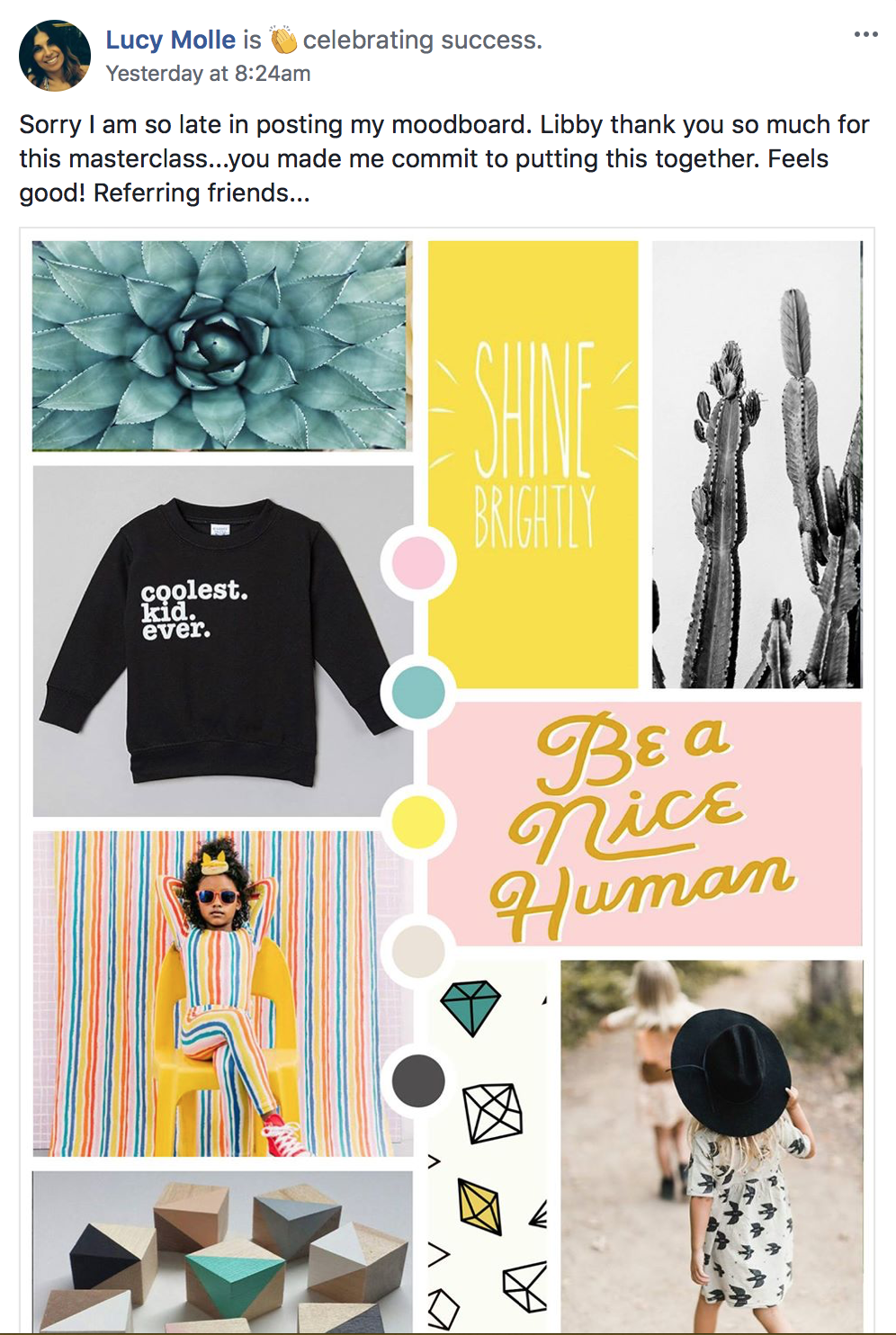

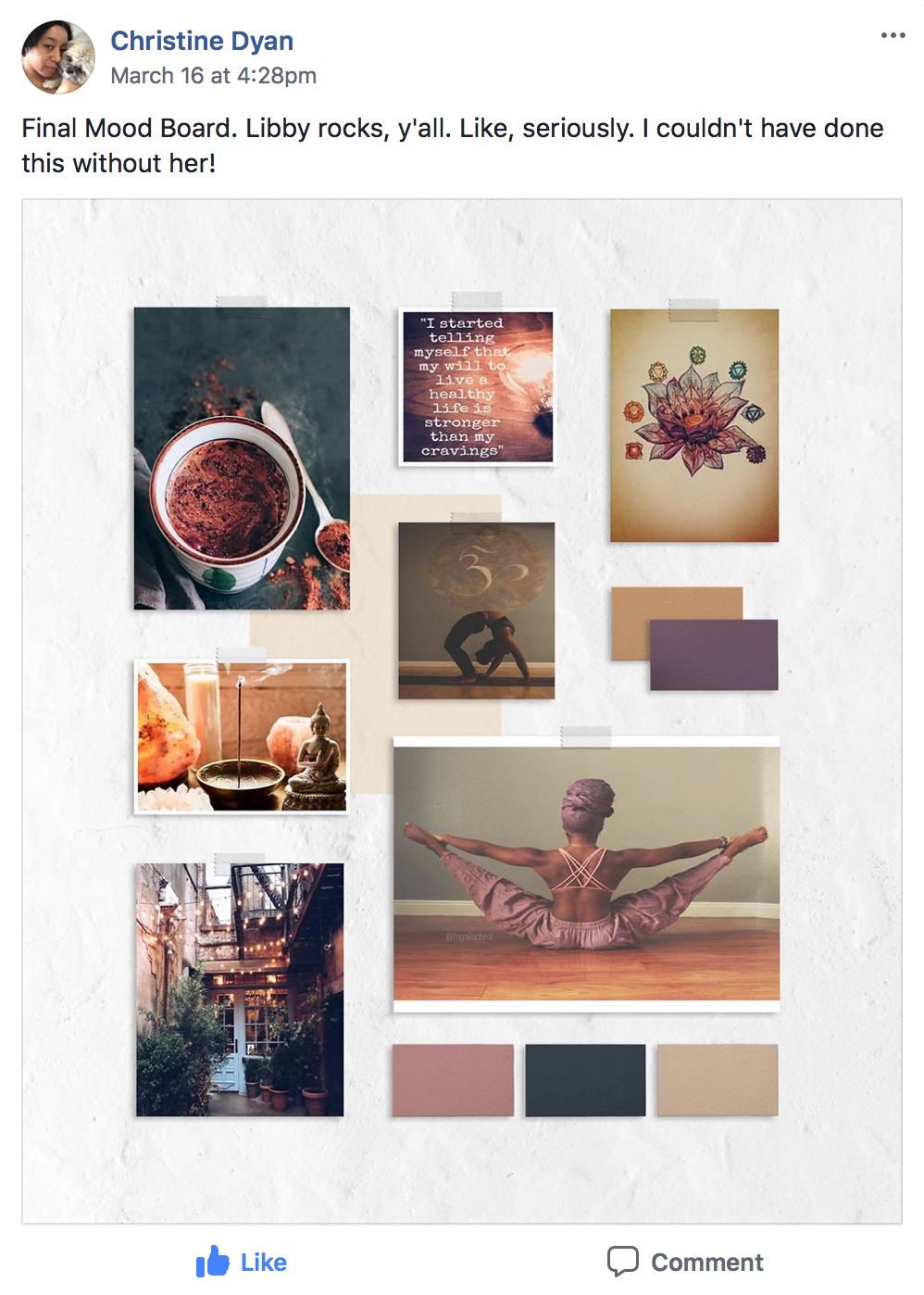


Now go create the perfect brand board for you!
Need to get clear on your brand visuals?
Join me for a Live (online) Mood Board Workshop where I’ll help you through the entire process. Learn more >>HERE. It’s gonna be FUNNNN!
XO.
Libby

